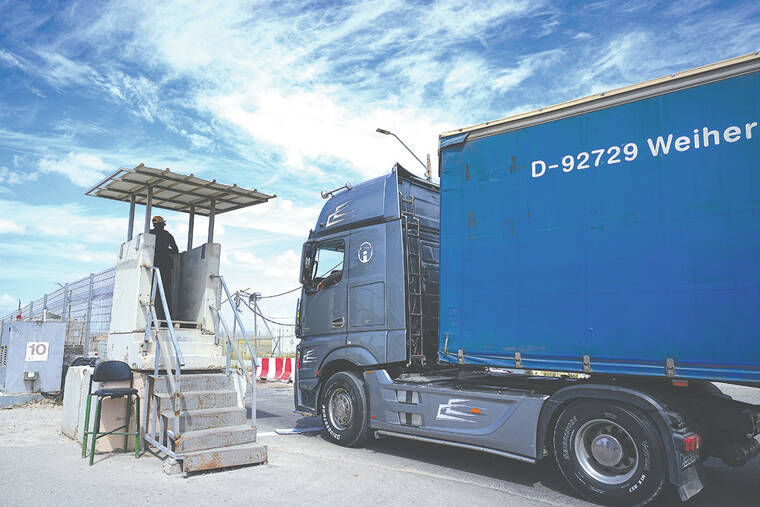More aid is supposed to be entering the Gaza Strip. Why isn’t it helping?
JERUSALEM — Under heavy U.S. pressure, Israel has promised to ramp up aid to Gaza dramatically, saying last week it would open another cargo crossing and surge more trucks than ever before into the besieged enclave.
But days later, there are few signs of those promises materializing and international officials say starvation is widespread in hard-hit northern Gaza.
Samantha Power, administrator of the U.S. Agency for International Development, said this week she accepted “credible” reports that famine is now occurring in the area and urged Israel to take further steps to expedite humanitarian aid shipments.
Power’s remarks echoed those of U.S. President Joe Biden, who said on Wednesday that Israeli efforts to increase aid were “not enough.”
While Israel says it has dramatically increased the number of aid trucks entering the territory, U.N. workers report only a slight uptick — possibly because they count trucks differently.
Here’s what we know about the aid entering Gaza, and why discrepancies in reporting persist:
How much aid is entering Gaza?
Israel says that since Sunday it has transported an average of 400 trucks a day into Gaza and that aid is now piling up on the Palestinian side of the Kerem Shalom crossing, one of two major crossings into the territory.
But Juliette Touma, communications director for the U.N. agency for Palestinian refugees, known as UNRWA, said that while aid workers have noticed a slight increase in the amount of aid entering Gaza, it’s nothing close to the surge Israel is claiming.
On Monday, UNRWA says 223 trucks of aid passed. On Tuesday, that number hit 246. On Wednesday, it was down to 141.
Meanwhile, only trickles of aid are reaching northern Gaza.
What has Israel promised?
After Biden said last week that future American support for the war in Gaza depends on Israel doing more to protect civilians and aid workers, Israeli Prime Minister Benjamin Netanyahu promised a series of steps. Biden spoke out after an Israeli airstrike killed seven aid workers delivering food to the strip.
Netanyahu pledged to immediately re-open Israel’s Erez crossing into northern Gaza — a pedestrian crossing destroyed by Hamas militants when they stormed into southern Israel on Oct. 7. Netanyahu also said he would allow Israel’s port in Ashdod to process aid shipments and increase Jordanian aid packages through another land crossing.
But Israeli officials this week dropped the plan to open Erez. Instead, they say a new crossing will be built, though it is unclear when it will open. The Ashdod port, meanwhile, is not yet accepting aid shipments and Gaza aid groups report no significant increase in trucks received at their warehouses.
Why is there a discrepancy between the UN and Israel’s numbers?
Israel and the U.N. count trucks arriving in Gaza differently.
Israel counts every truck it inspects and allows to pass into Gaza, according to Shimon Freedman, a spokesperson for COGAT, the Israeli defense body in charge of Palestinian civilian affairs.
At the Kerem Shalom crossing, once the trucks pass into Gaza, the pallets of aid they are carrying are deposited in a 1-kilometer-long (a half-mile) zone for Palestinian drivers to pick up.
UNRWA only counts the trucks, driven by a Palestinian contractor, returning from that zone, Anderson said.
He also said that sometimes the trucks arriving from Israel are not fully loaded. Palestinian drivers on the Gaza side of the crossing load their trucks fully before passing through the gate — something that could further account for truck count differences.


